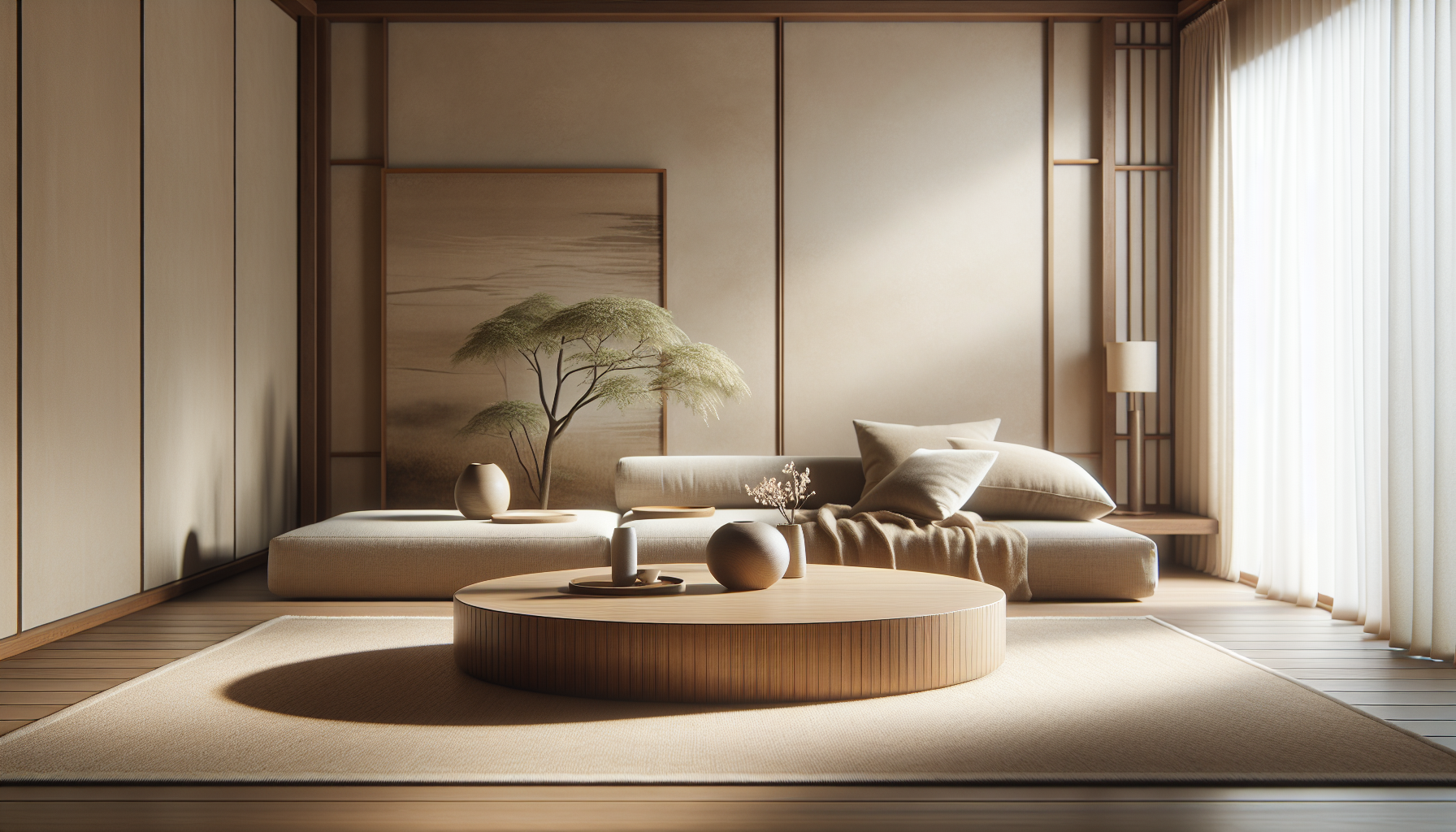Have you ever stepped into a room and felt a wave of calm wash over you? Perhaps it was the simplicity of the decor or the strategic arrangement of furniture that created a serene atmosphere. If you’re considering transforming your living room into a Japandi haven, you might be wondering: how much empty space is ideal for achieving that perfect balance?
Understanding Japandi Style
Japandi style is the beautiful fusion of Japanese minimalism and Scandinavian functionality. This design philosophy emphasizes simplicity, natural materials, and a sense of calm. It’s all about creating environments that feel airy and relaxing while remaining functional and inviting. Achieving the right amount of empty space is key to embodying this philosophy.
The Essence of Minimalism
At its core, minimalism is about decluttering and making intentional design choices. In a Japandi living room, this means selecting only the essentials, which allows you to appreciate each piece fully. When considering how much empty space is ideal, think about what minimalism means for your lifestyle and design preferences.
The Role of Empty Space
Empty space, often referred to as “negative space,” plays a crucial role in design. It creates visual breathing room that helps highlight the elements you do choose to include. In a Japandi living room, this space allows your furniture and decor to shine without overwhelming the senses.
Psychological Benefits of Empty Space
The layout and design of your living room can significantly impact your mood and stress levels. Research suggests that environments with ample empty space can evoke feelings of tranquility and focus. By incorporating ideal amounts of empty space, you can foster a more serene and pleasant atmosphere.
Ideal Empty Space Ratios
When thinking about your Japandi living room design, consider applying the 60-30-10 rule, which is popular in interior design. This rule suggests using:
- 60% of the room for a dominant color or pattern.
- 30% for a secondary color or pattern.
- 10% for an accent.
Practical Application of the 60-30-10 Rule
Let’s break this down in a context relevant to Japandi style:
| Spacing Element | Ideal Percentage | Purpose |
|---|---|---|
| Dominant Color | 60% | Sets the foundational tone |
| Secondary Color | 30% | Adds depth and interest |
| Accent Color/Items | 10% | Creates focal points |
By adhering to these percentages, you can create a living room that feels spacious yet coherent.
How to Measure Empty Space
Now that you have a better understanding of how to apply the 60-30-10 rule, how do you measure empty space practically within your living room? Here’s a simple approach.
Room Layout and Dimensions
Begin by measuring your living room dimensions. Calculate the total square footage and think about how much area you want to remain empty. Generally, you want at least 30% to 50% of your living room to be empty space to maintain that calm feeling typical of Japandi design.
Visualizing the Space
When visualizing how this will look, consider drawing out your room on paper or using design software. Create different layouts to see how furniture placement affects the amount of visible space. You can also use painter’s tape on the floor to outline furniture placement to get a live visual of how much room is being taken up.
The Importance of Functionality
Another key aspect of Japandi style is functionality. Your living room should not only look good but also serve its purpose effectively. Finding a balance between function and empty space is essential.
Multi-functional Furniture
Incorporating multi-functional furniture can help you maximize space while minimizing clutter. Here are some ideas:
| Furniture Type | Functionality |
|---|---|
| Ottoman | Acts as seating and storage |
| Sofa Bed | Provides seating during the day and a bed at night |
| Nesting Tables | Saves space when stacked but can be separated for use |
The strategic use of functional pieces will keep your space clean and organized, allowing for the ideal amount of empty space.
Creating Zones with Empty Space
In larger rooms, you can also utilize empty space to create distinct zones within your living area. This can enhance structure and organization, making the space feel more cohesive and intentional.
Identifying Zones
Consider the primary functions of your living room—what activities do you want to accommodate? Here are some common zones:
| Zone Type | Purpose |
|---|---|
| Conversation Area | For socializing and relaxation |
| Reading Nook | A cozy corner with a chair and lamp |
| Entertainment Space | Area for media, games, or gatherings |
Strategic Furniture Placement
To create these zones effectively, think about how you arrange your furniture. You want to leave enough empty space around each zone, promoting easy movement and ensuring the areas feel separate without closing off the space entirely.
The Flow of Movement
Empty space is not just about how much is there but how it impacts the flow of your living room. Proper spacing allows for effortless movement between zones and encourages a free, open atmosphere.
Achieving Natural Flow
To achieve good flow, consider these pointers:
- Pathways: Ensure there are clear pathways between furniture. A general rule is to have at least 24 to 36 inches of space for walkways.
- Balanced Arrangements: Group furniture in a way that promotes conversation without creating barriers. Circles and L-shapes are popular configurations for cozy, inviting layouts.
By focusing on movement, you help create a sense of harmony that aligns with the Japandi philosophy.
Simplicity in Decor
While your furniture may be functional, it’s also essential to consider decor elements. In Japandi design, the decor should be simple but meaningful. One method to maintain that balance while preserving empty space is by carefully curating your decorative items.
Selecting Meaningful Decor
Choose decor items that have significance or that evoke serenity. Instead of overcrowding surfaces, opt for:
-
Single Statement Pieces: A large artwork, a lovely plant, or a carefully chosen sculpture can serve as the focal point without adding clutter.
-
Natural Elements: Incorporate items from nature, like wood and stone, which echo the Japandi style. They not only add texture but also maintain that organic feel.
Clutter-Free Surfaces
Maintain surfaces free of unnecessary items. Consider storage options such as baskets or closed consoles, which allow you to keep things organized while keeping the visual space open.
Seasonal Considerations
Keep in mind that the design and functionality of your living room may need adjustments with the change of seasons. Each season brings its own colors, textures, and light levels that can affect how you perceive empty space.
Adapting Your Space Seasonally
- Winter: Embrace cozy textiles—think warm throws and plush pillows—while keeping key areas uncluttered.
- Spring: Introduce lighter, airier decor and fresh greenery. This could mean swapping out heavier items for more minimalist options.
- Summer: Choose light filters and sheer curtains to allow natural light to flow, enhancing the feeling of empty space.
- Fall: Add layers with rustic elements while ensuring not to overcrowd the space. The aim is to feel warm, inviting, yet still airy.
The Power of Natural Light
Remember that natural light plays a critical role in how empty space feels. It can greatly affect how spacious or cramped the living room appears.
Enhancing Natural Light
Here are a few strategies to maximize natural light and create an airy feel:
- Window Treatments: Use sheer curtains that allow light to filter through while still maintaining privacy.
- Reflective Surfaces: Incorporate mirrors or glass elements that can bounce light around the room.
- Light Color Palette: Stick with a light color palette for walls and furnishings, enhancing the infusion of light, thereby complementing the empty space.
Personalized Touches
Finally, make your living room reflect your personality. The Japandi style welcomes a range of personal touches, so don’t shy away from expressing your individuality while respecting the principles of minimalism and functional design.
Balancing Personalization with Space
Aim for a few personal items that resonate with you—a cherished photograph, a handmade vase, or artwork. Make sure these items feel intentional, and avoid cluttering your space with too many decorations.
Conclusion: Finding Your Balance
Finding the ideal amount of empty space in your Japandi living room is a unique journey tailored to your personal style and lifestyle. By incorporating the principles of minimalist design, ensuring functionality, and focusing on layout, you can create a space that feels both spacious and inviting.
Embrace the calming atmosphere that comes with the right balance of furniture, decor, and empty space. With thoughtful arrangements, strategic furniture choices, and meaningful decor, your living room can become a serene oasis reflecting your taste while staying true to the harmonious principles of Japandi design.

